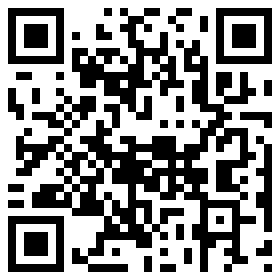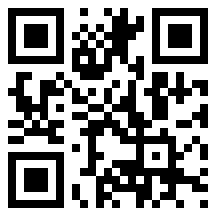What is Minecraft?
Minecraft is a game involving critical thinking, collaboration and cooperation, strategic analysis, creative engineering, and architectural skill that is extremely popular in its own right. In 2016 50,000 copies a month were purchased and 40 million players a month logged into the game (according to Jeff Kuhn in Kuhn and Stevens, 2017, see reference at end of this post). It is particularly being utilized in education where teachers wish to promote the skills listed above in their work with students. As evidence of how seriously this has impacted education, Microsoft has bought the game from its creators Mojang and is marketing it at huge conferences such as ISTE where their workshops on Minecraft are attracting lines out the doors of educators eager to learn more and use it in their classrooms.
Why in a military academy context?
I think it would be of particular use in my context because the game is designed with fascinating depth to suggest seemingly endless possibility. It emulates military skills such as strategic thinking, establishing a base in a wilderness, protecting it from threats arising in the game, and teaming with others to develop their base through finding resources that can be put to use in creating objects to further team goals. Use of Minecraft would introduce elements of gamification in our coursework (as opposed to using ‘games’ in class, which is not the same as gamification). Students could communicate with us in various ways about their experiences playing the game.
The things you can do in Minecraft are limited only by your imagination. You can find coal and iron and create metal objects, such as railroads, where mine carts you can ride in are powered through redstone, so you can build machines that work on wiring you devise. You can set logic gates, and program in the game. You can build and fortify, set up farms so you can feed yourself and others, raise animals, and grow your own trees so you have an endless supply of wood. You have to employ strategies and carry out advanced planning to thrive in the game. Often players will work in teams.
I created this set of Minecraft challenges for my students in the military college where I work. The challenges are designed to get them to take the tutorial that comes with the Minecraft Edu version, cross the ravine at the end of the tutorial and explore the world on the other side, and eventually parachute into a wilderness where they have to establish a perimeter, defend it, and sustain and develop it in cooperation with other players in their platoon / team.
http://vancesclass.pbworks.com/w/page/117588981/49_Sections_5-6_EESP#MinecraftChallenge1nbspTheTutorialWorld
I created this set of Minecraft challenges for my students in the military college where I work. The challenges are designed to get them to take the tutorial that comes with the Minecraft Edu version, cross the ravine at the end of the tutorial and explore the world on the other side, and eventually parachute into a wilderness where they have to establish a perimeter, defend it, and sustain and develop it in cooperation with other players in their platoon / team.
http://vancesclass.pbworks.com/w/page/117588981/49_Sections_5-6_EESP#MinecraftChallenge1nbspTheTutorialWorld
Who enjoys Minecraft?
Children and adults of all ages enjoy it. It is played by kids as young as 4, e.g. pre-literate, so it relies more on intuition than on language. However there is much evidence of children in foreign countries becoming fluent in English through explaining in that lingua franca what they are doing in Minecraft to others around the world. This article gives an example of one such person, a ten year old Croatian boy who achieved fluency in English through Minecraft
- Smolčec, M., Smolčec, F. and Stevens, V. (2014). Using Minecraft for Learning English. TESL-EJ, 18(2),1-15. Retrieved from http://www.tesl-ej.org/pdf/ej70/int.pdf.
Minecraft can form the basis of writing and multimedia projects where students are highly motivated to show what they are building and doing. They also will research how to do things on Minecraft. One teacher in Turkey reported how his students went out and bought an advanced Minecraft guidebook in English, and helped each other read it, because it wasn’t available in Turkish. Dave Dodgson has recently joined the moderating team of EVO Minecraft MOOC to help teachers understand the dynamics of gamified learning:
- Dodgson, D. (2017). Digging Deeper: Learning and Re-learning with Student and Teacher Minecraft Communities. TESL-EJ 20, 4:1-12). Available: http://www.tesl-ej.org/wordpress/issues/volume20/ej79/ej79int/.
What is needed to get Minecraft working where you teach?
Any individual who plays Minecraft requires an account which must be purchased from Mojang for about $28. That’s for a lifetime license, but annual licensed logins are available through educational institutions for only $5 per user, from
https://education.minecraft.net/.
The Mojang user ID allows you to play any version of Minecraft. There are many versions with different capabilities. Trusted users are normally white-listed on servers, so in practice you can only play as a single player, or on servers where you are allowed to enter. In order to fully exploit the game in education, it should be played in community mode on a server available to multiple simultaneous users.
https://education.minecraft.net/.
The Mojang user ID allows you to play any version of Minecraft. There are many versions with different capabilities. Trusted users are normally white-listed on servers, so in practice you can only play as a single player, or on servers where you are allowed to enter. In order to fully exploit the game in education, it should be played in community mode on a server available to multiple simultaneous users.
The full PC / MAC version of Minecraft is the most versatile. We are looking to purchase licenses for the education edition which I am not familiar with first hand, but it allows up to 30 to play at once, according to http://minecraft.gamepedia.com/Education_Edition. It is also possible for us to get a free trial for a limited time.
Training teachers
This brings us to the most important thing needed, and that is a cohort of teachers who are aware of how Minecraft can leverage their learning and that of their students through gamification.
Two years ago, in 2015, my interest in Minecraft as a tool for this kind of learning was such that I organized an Electronic Village Online session for the purpose of learning how to play the game and understand how we could use it to gamify learning environments. We have just completed our third year of the community that was formed then. I have become an accomplished player, and I have a network of other teachers (plus Paul) who can help us with the server side issues.
The EVO Minecraft MOOC community landing page is here, https://plus.google.com/u/0/communities/112993649763396826671
To start a similar teachers’ group at your institution you'd need to install the software where teachers can use it and show them how to play there using user ID from the pool requested. Where I work, we will have to experiment with networking other devices so teachers can play in leisure time, which is needed for them to become familiar enough with the game to see how their students might learn it and use it for productive class purposes. It is not necessary in this game that teachers be authoritative sources of knowledge. Students and other players will inevitably make discoveries which they will be eager to share with peers and teachers alike, using communication skills we are trying to teach them.
Further reading
I have described the process of how teachers can learn to be proficient in Minecraft in presentations at conferences, one of which resulted in this chapter in the proceedings of the 2016 TESOL Arabia conference:
- Stevens, V. (2017). Gamifying Teacher Professional Development through Minecraft MOOC. In Zoghbor, W., Coombe, C., Al Alami, S. & Abu-Rmaileh, S. (Eds.). Language Culture Communication: Transformations in Intercultural Contexts. The Proceedings of the 22nd TESOL Arabia Conference. Dubai: TESOL Arabia. Pages 75-92. Available: http://vancestevens.com/papers/evomcmooc_TACON2016.pdf
The following free eBook gives comprehensive information about how and why teachers use various aspects of Minecraft to further pedagogical goals:
- Dikkers, S. (2015). Teachercraft: How teachers learn to use Minecraft in their classrooms. Lulu.com. Available: http://press.etc.cmu.edu/files/Teacher-Craft_Dikkers-etal-web.pdf.
- Kuhn, J. and Stevens, V. (2017). Participatory culture as professional development: Preparing teachers to use Minecraft in the classroom. TESOL Journal 8, 4:753–767. https://doi.org/10.1002/tesj.359and http://onlinelibrary.wiley.com/doi/10.1002/tesj.359/full.


 Tag in your DEL.ICIO.US account
Tag in your DEL.ICIO.US account










